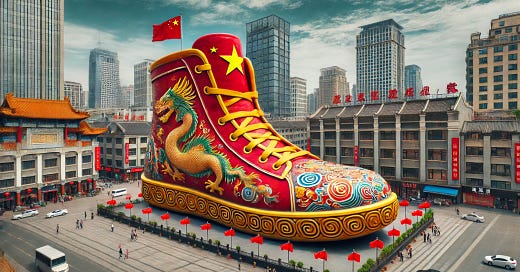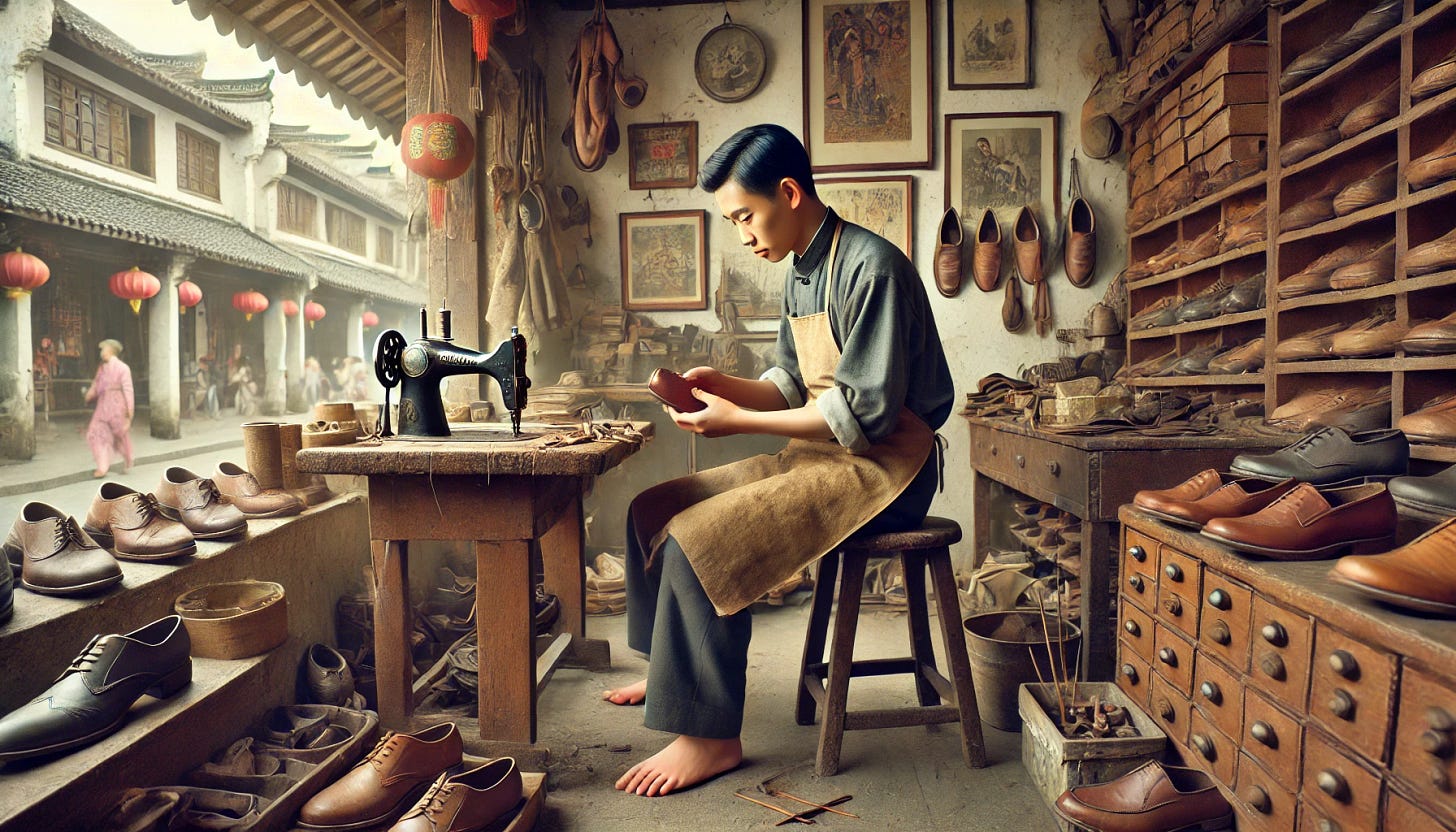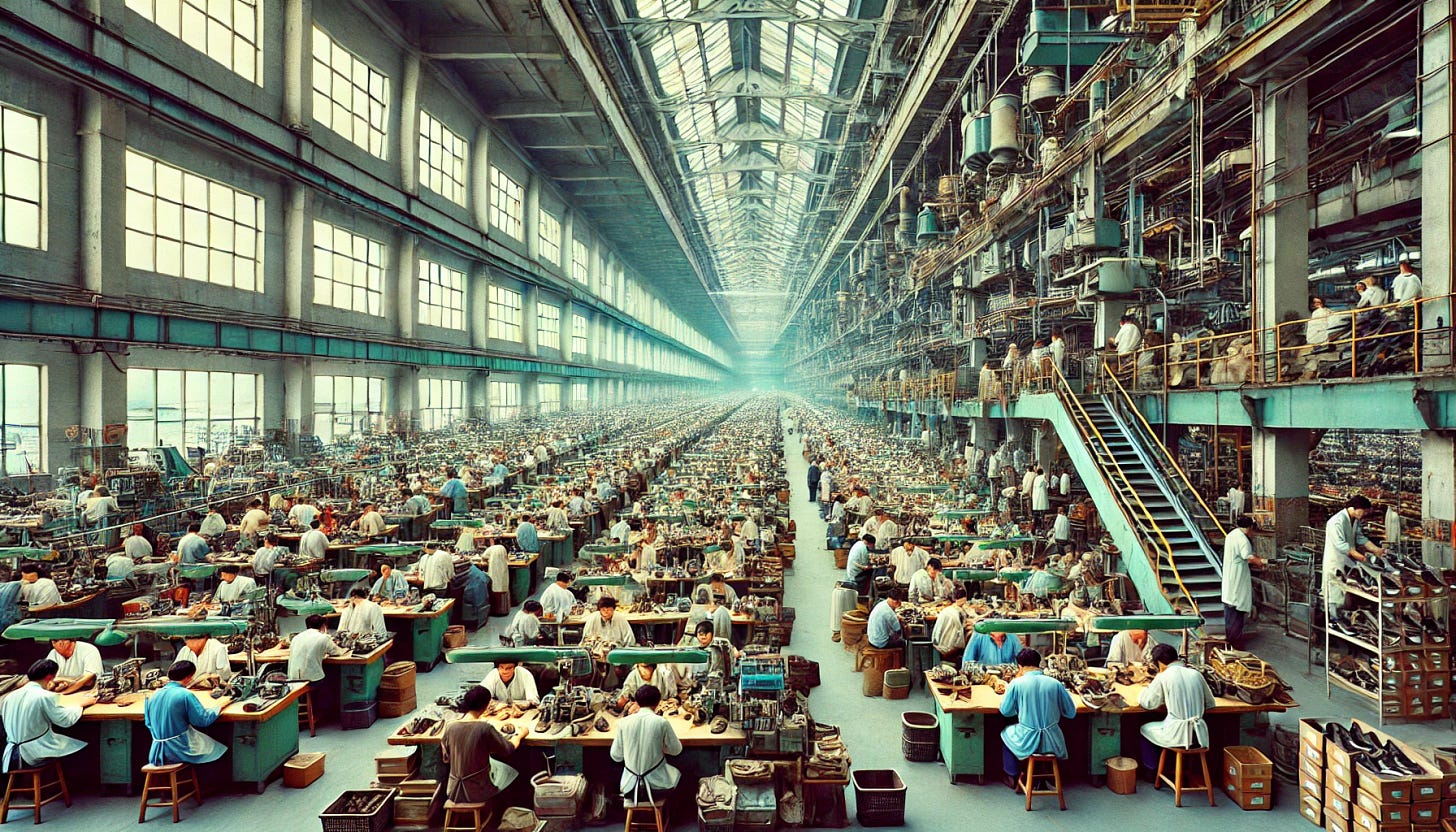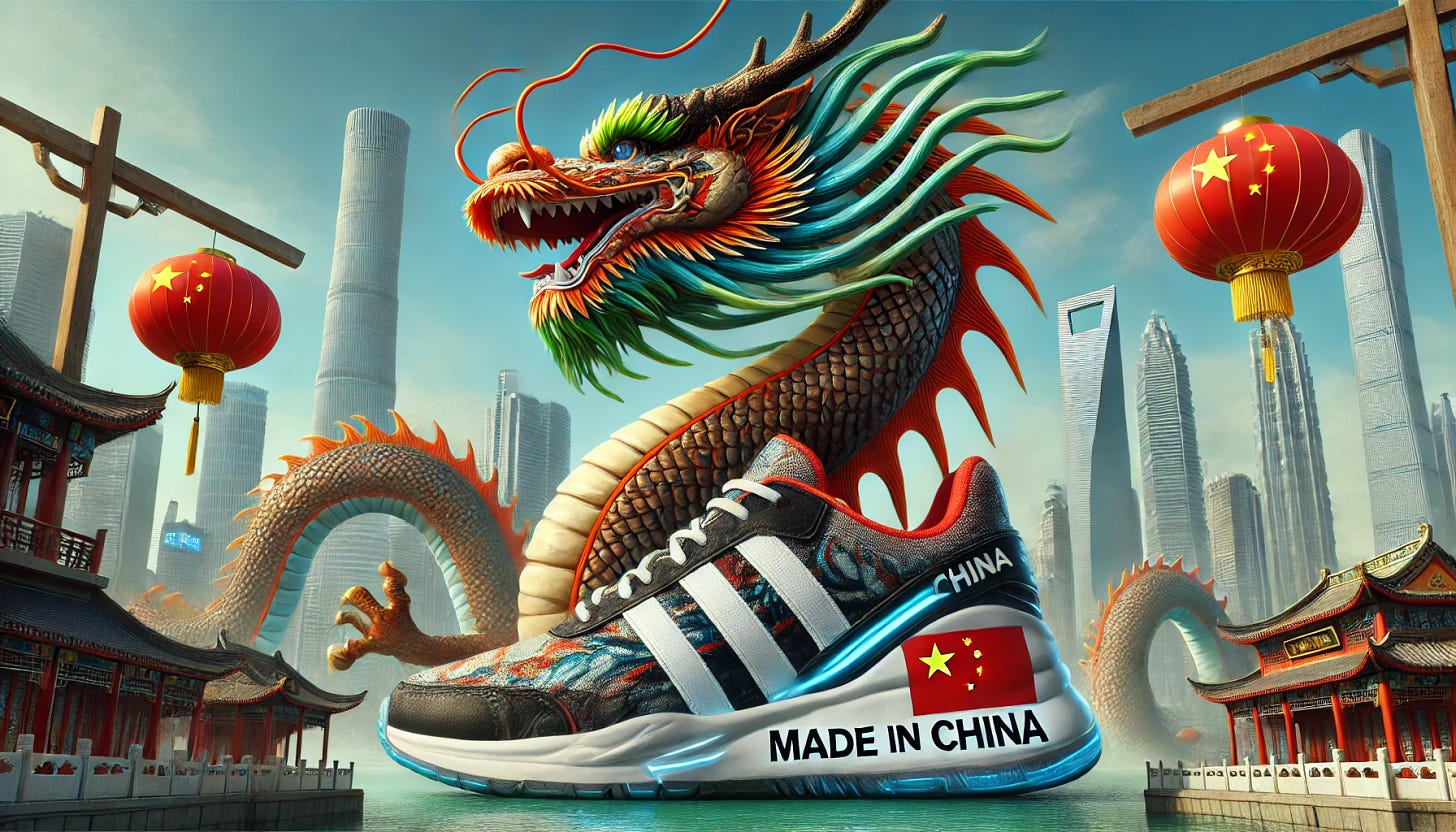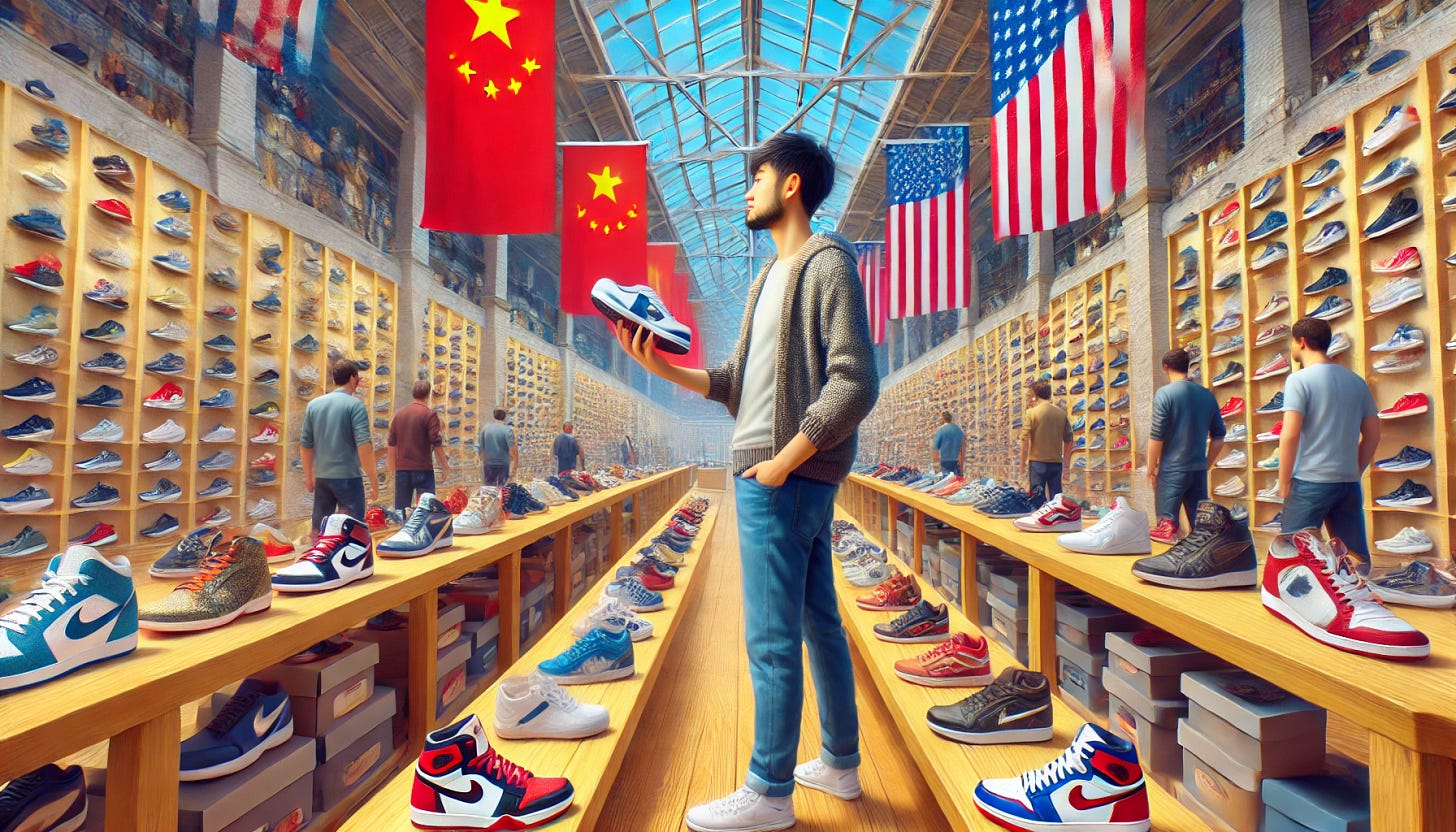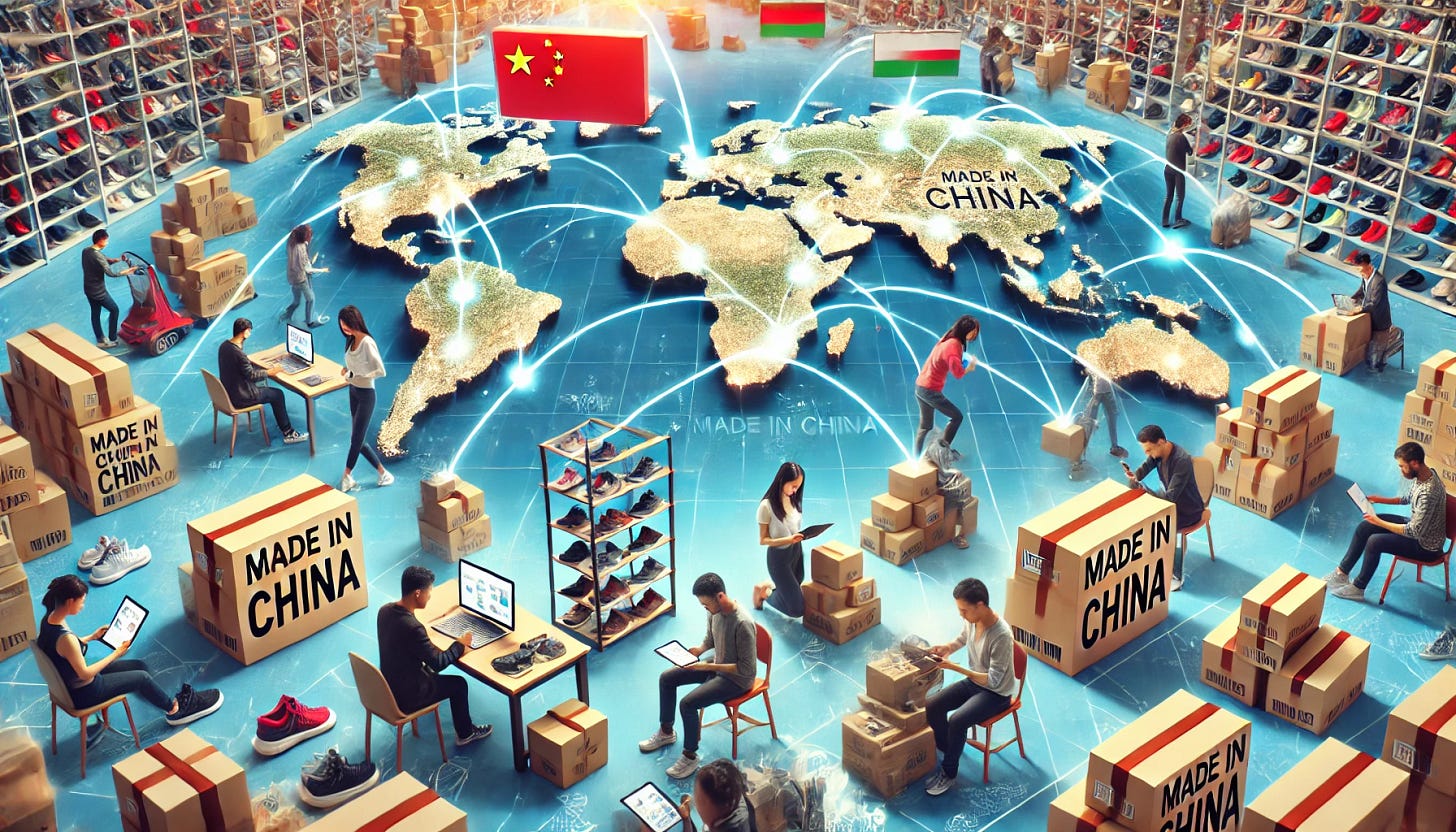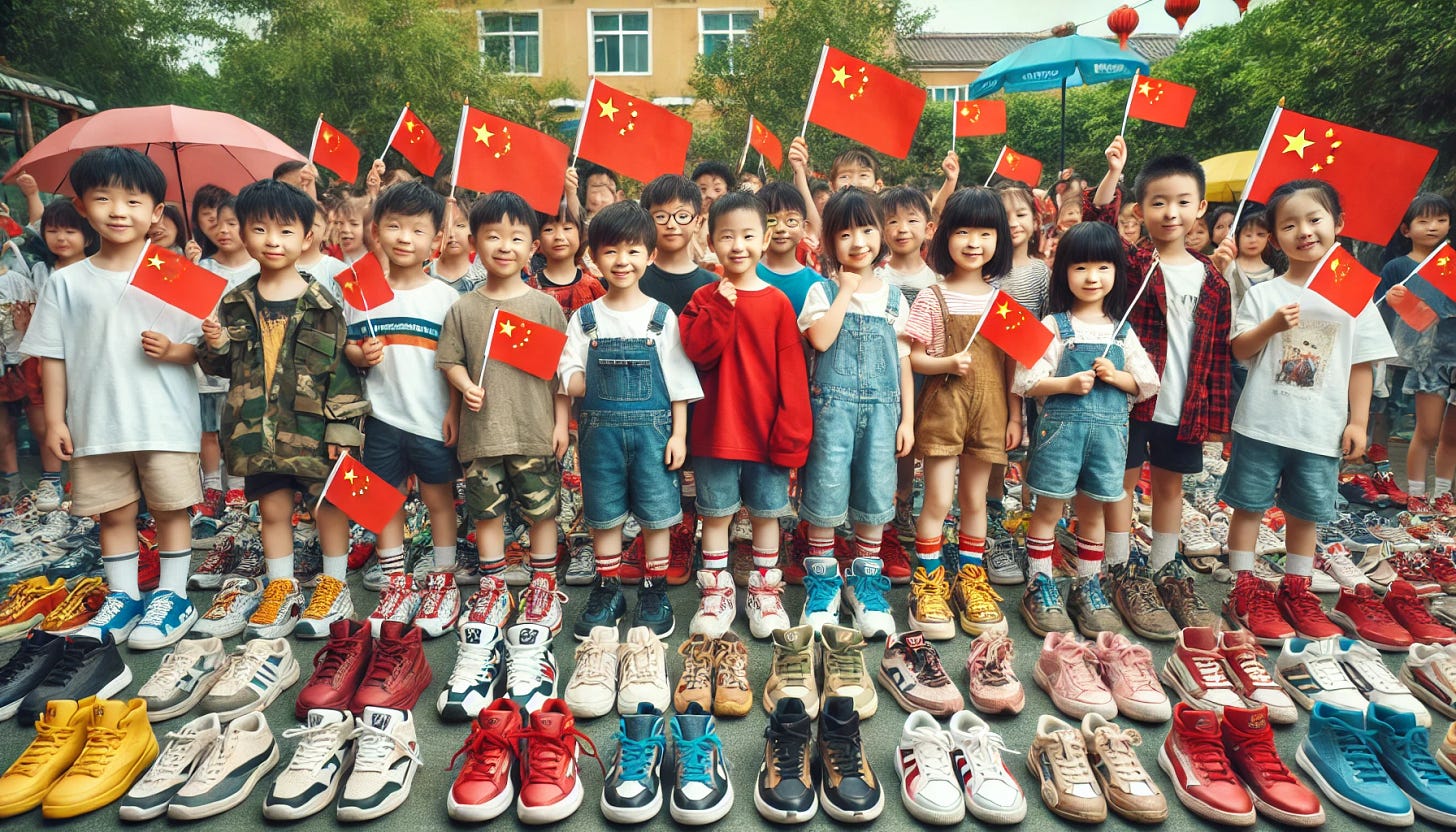#19: The Stride of China's Footwear Manufacturing Revolution
In 2023, China produced over 13.5 billion pairs of shoes, nearly 60% of the world’s total footwear. And this way it generated a staggering $80 billion in revenue annually.
Did you know the shoes you're wearing right now likely have a Chinese footprint?
In 2023, China produced over 13.5 billion pairs of shoes, nearly 60% of the world’s total footwear. And this way it generated a staggering $80 billion in revenue annually.
These staggering numbers aren't just statistics. They are a testament to China's colossal footprint in the global footwear market.
Today, we'll lace up for an in-depth exploration of this industry, its evolution, key players, global impact, and the challenges and opportunities that lie ahead.
So, let’s go!
The Humble Beginnings: Planting the Seeds
China’s journey in footwear manufacturing started in the early 1960s and 70s when small, localized factories began producing shoes.
These units mostly focussed on simple, labour-intensive production, catering primarily to domestic demand.
However, the real transformation kicked off with the economic reforms initiated by Deng Xiaoping in the late 1970s. With the advent of the new open-door policy, China became a magnet for foreign investment.
And as the Chinese footwear manufacturers seized the opportunity to tap into export-led growth, the stage was set for a great run!
Scaling New Heights: The 1990s to 2000s Boom
Throughout the 1980s and 1990s, China's footwear industry experienced a period of rapid expansion.
And by the mid-1990s, China had become a magnet for global brands seeking cost-effective manufacturing solutions.
The country's vast labour pool, low wages, and favourable government policies created a fertile ground for growth.
Driving on that foundation, Chinese footwear manufacturers quickly established themselves as reliable suppliers for international brands, offering competitive prices and impressive production capacity.
Thus followed the entry of multinational corporations like Nike, Adidas, and Reebok, which not only brought in significant foreign investment but also propelled Chinese manufacturers up the value chain.
Cities like Putian in Fujian province emerged as shoe manufacturing capitals. And the impact was so large, that by 2005, China was hailed as the 'World's Factory' for footwear, with production numbers skyrocketing each year.
Today's Giant Steps: A Look at the Present State
Today, China's footwear industry is a well-oiled machine, It is marked by both massive scale and innovation.
Leading companies such as Anta Sports and Li Ning, with revenues of $4.1 billion and $2.1 billion respectively in 2022, dominate not just the local market but are also significant players on the international stage.
These companies are known for their quick turnarounds and ability to mass-produce diverse styles that cater to varying global tastes.
Key Players: The Titans of China's Footwear Industry
Within this vast and dynamic industry, a handful of companies have emerged as dominant players, shaping the landscape of footwear manufacturing in China and beyond.
Yue Yuen Industrial Holdings:
A subsidiary of Taiwanese contract manufacturing giant Pou Chen Corporation, Yue Yuen is the undisputed titan of the global footwear manufacturing scene.
With annual revenue exceeding $9 billion, the company boasts an extensive network of factories across China and Southeast Asia, employing hundreds of thousands of workers.
Yue Yuen is the go-to manufacturer for many of the world's most iconic brands, including Nike, Adidas, Puma, and New Balance. Its success is built on a foundation of operational efficiency, advanced manufacturing techniques, and a commitment to innovation.
And interestingly, Pou Chen is also building a massive plant in India’s Tamil Nadu.
Stella International Holdings:
While Yue Yuen focuses on athletic and casual footwear, Stella International has carved a niche for itself in the luxury footwear market.
The company is a leading partner for prestigious brands such as Prada, Gucci, and Burberry. Its revenue in 2023 surpassed $2 billion, reflecting its strong position in the high-end segment.
The company's state-of-the-art facilities and unwavering focus on quality have earned it a reputation for excellence among luxury brands.
Belle International Holdings:
Unlike Yue Yuen and Stella International, which primarily focus on manufacturing for other brands, Belle International has built a powerful portfolio of its own brands.
The company operates over 20,000 retail stores across China, selling a diverse range of footwear and accessories. Belle International's revenue in 2023 exceeded $5 billion, solidifying its position as a dominant force in the Chinese domestic market.
Li Ning Company Limited:
Founded by Olympic gymnast Li Ning, this company has become a major player in the Chinese sportswear market.
Li Ning designs, manufactures, and markets a wide range of athletic footwear and apparel, competing directly with international giants like Nike and Adidas.
The company's revenue in 2023 exceeded $3 billion, demonstrating its growing influence in the global sporting goods industry.
These are just a few of the major players in China's footwear manufacturing industry. A multitude of smaller manufacturers and suppliers also contribute to the sector's vibrancy and diversity, catering to niche markets and specialized footwear segments.
Navigating the Road: Opportunities and Challenges
Overall, the Chinese footwear industry's scale is made possible by a vast network of factories, suppliers, and logistics providers, forming a complex and efficient supply chain.
The industry has also evolved to cater to a wide range of consumer preferences, producing everything from affordable everyday shoes to high-end luxury footwear.
This adaptability and responsiveness to market trends have cemented China's position as the world's leading footwear producer.
The industry is also a major employer, providing jobs and livelihoods for millions of people in China and other countries where Chinese companies have established factories.
Moreover, the industry's competitive pricing has democratized fashion, making stylish and affordable footwear accessible to consumers worldwide.
However, China's dominance in the footwear industry is not without its controversies.
Concerns about labour practices and environmental sustainability have been raised by critics and watchdog organizations. While the Chinese government and industry have taken steps to address these issues, they remain ongoing challenges that require continuous monitoring and improvement.
Add to that the increasing international competition from countries like Vietnam and Indonesia, where labour costs remain lower. And that begins to show how things aren’t as easy anymore as it probably was.
And to that add the global shift toward sustainability, which poses both a challenge and an opportunity, as consumers and regulators demand more environmentally friendly production processes.
Thus, a lot’s happening here!
..
Policies in Motion: Government's Supporting Role
However, China's vast scale, technological advancements, and the government's ongoing support for the industry provide a solid foundation for continued success.
Particularly, the Chinese government has been instrumental in facilitating this growth through favourable policies, from subsidies and tax rebates to investing heavily in technological upgrades within the industry.
Driven by this, in the recent years, there has been a growing emphasis on sustainability and innovation within China's footwear industry. Companies are investing in research and development to create more environmentally friendly materials and manufacturing processes.
Many are also publicly known to be exploring new technologies like 3D printing and automation to improve efficiency and reduce costs.
For example, in 2023, a coalition of Chinese manufacturers announced a $500 million investment in green technologies to reduce the carbon footprint of shoe production, reflecting the industry’s proactive shift towards sustainability.
Thus, I would not bet against Chinese dominance in the space, that easily!
A Global Comparison: Standing Tall on the World Stage
The US is the largest importer of Chinese footwear, relying heavily on China for its supply of shoes.
In fact, it imported over $25 billion worth of footwear in 2023, much of it from China, highlighting the interlinked nature of global trade and consumption patterns.
However, recent trade tensions and tariffs have led some American brands to diversify their sourcing strategies and explore alternatives to China. This shift presents both challenges and opportunities for both countries, as China seeks to maintain its market share.
Meanwhile, think of India’s case:
Consider that the entire footwear output of India, another major producer, was just over 2.5 billion pairs in 2023- A fraction of China’s production.
India, with its vast population and burgeoning middle class, is a major consumer of Chinese footwear. However, India also boasts a growing footwear manufacturing industry of its own, with ambitions to compete on the global stage.
And, while Indian manufacturers benefit from lower labour costs, they face challenges in terms of technology, infrastructure, and supply chain efficiency compared to their Chinese counterparts.
..
But, to help the Indian industry scale up, the Indian Government has year wreaked havoc on Chinese imports by erecting non-tariff barriers.
Via BIS, the Government announced quality standards which must be met in the imported footwear.
And now, to import any Chinese footwear, by mandating that every shoe importer in India will have to get suppliers approved from the BIS, which is an endlessly time-consuming bureaucratic process.
This has led to a dramatic fall in footwear imports from China into India, while multiple major players have announced India investments, like in case of Pou Chen as I shared above.
Keeping Pace with Change
Anyhow, as we tie up this edition of "Decoding The Dragon," it's clear that China's footwear industry continues to stride boldly forward.
With its blend of scale, speed, and innovation, China is not just making shoes; it's setting the pace for the global footwear industry, one step at a time.
It’s a dynamic and ever-evolving landscape, shaped by a complex interplay of economic, social, and political forces.
While the industry faces challenges, its resilience, adaptability, and commitment to innovation position it for continued growth and success in the years to come.
Stay tuned for the next "Decoding The Dragon" issue, where I will explore another fascinating element of China's transformative journey.


